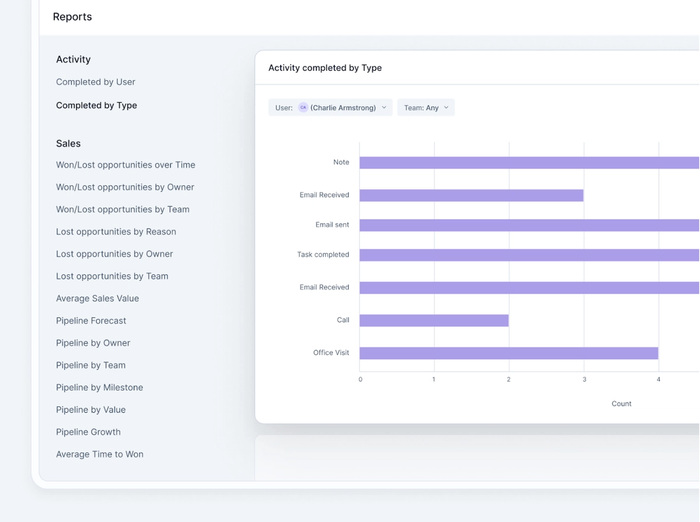Every business faces challenges, from finding customers to adopting more sustainable practices. While these issues can be difficult for any company, they are particularly challenging for small businesses with limited resources. It can be incredibly frustrating to see competitors rapidly growing while you’re stuck trying to stretch every dollar.
If you’re struggling to grow your small business, a partnership might be the solution you’re looking for, unlocking new opportunities to expand without needing a large upfront investment. However, building successful partnerships requires more than just a handshake or a verbal agreement. It involves careful planning, clear communication, and commitment.
In this article, you’ll learn the essential steps to building better partnerships for your small business, from identifying potential partners to nurturing long-term relationships. By the end of this guide, you’ll have the tools and strategies needed to forge partnerships that drive growth and success.
Understanding the value of partnerships
A business partnership simply refers to two or more businesses collaborating to achieve shared goals. Partnerships can take various forms, such as strategic alliances, joint ventures, or referral partnerships, each offering unique benefits depending on your business needs and objectives.
Partnerships are particularly valuable for small businesses because they provide access to opportunities that might otherwise be out of reach. A well-chosen partnership can open the door to new markets and customers, enhance your brand, and spread costs on marketing, development, and operational expenses.
Partnerships can also drive innovation by combining each partner’s unique strengths and expertise, leading to new products or services you couldn’t achieve alone.

However, the true value of a partnership lies in its ability to create a win-win situation, where both parties benefit and grow together. Understanding this fundamental principle is the first step towards building effective, long-lasting partnerships that can significantly contribute to your small business's success.
Identifying potential partners
The first step to building successful partnerships for your small business is deciding what you want in a partner. What kind of skills, products, or services would complement your own solutions? What values do they need to have?
Research companies operating in your industry or adjacent markets. Often, the best place to start looking is businesses within your existing network. Exploring a partnership with someone you already know can establish trust more quickly and is a strong foundation for a successful collaboration.
If you need to expand your horizons then industry events, networking groups or even social media can all help you discover potential partners and initiate conversations. Conducting market research can also identify companies with similar goals and customers.
As you discover potential partners, use your customer relationship management (CRM) software to capture their details. You can tag them as a potential partner for future segmentation, while Capsule’s Data Enrichment feature helps complete the profile with additional relevant information.

Building and nurturing relationships
Once you’ve identified potential partners, reach out and connect. Strong business partnerships are founded on trust, transparency, and mutual respect, so establish the right pattern from the very beginning with clear communication and expectations.
This means having open discussions about each party’s goals and needs. Transparency in these early conversations helps prevent misunderstandings and sets a positive tone for the collaboration.
When approaching potential partners, show what’s in it for them with a compelling value proposition that clearly outlines the mutual benefits of the partnership.
Use an email marketing platform to personalize your outreach to show you’ve done your homework and understand their needs. Transpond integrates seamlessly with Capsule to pull all your CRM details through for use in your partnership emails.

Remember, your goal is to create a win-win situation where both businesses can achieve more together than either could alone. Regular communication is essential to staying aligned and fostering a culture of collaboration. Schedule regular check-ins, whether through meetings, calls, or emails to discuss progress and address any issues.
If either of you gets a win, celebrate it. When challenges inevitably arise, address them promptly and constructively. Open communication and a willingness to find mutually beneficial solutions can turn potential conflicts into opportunities for growth and strengthen the overall partnership.
Structuring effective partnership agreements
After laying the groundwork, it’s essential to formalize your business partnership with a comprehensive partnership agreement. A well-structured agreement works as a roadmap, protecting both parties and ensuring everyone’s on the same page from the beginning.
Here’s how to go about creating your partnership agreement:
1. Clearly define roles and responsibilities
Outline exactly what each partner will bring to the table. This means everyone knows what is expected of them and helps prevent overlaps and misunderstandings. Determine which tasks each party will handle and clarify any resources each partner will provide, such as funding, equipment, or personnel and make a copy of this agreement in writing.
2. Outline financial arrangements
We’ve already mentioned resources, but it’s important to specifically address how you’ll deal with finances to ensure fair compensation and prevent disagreements. Decide how costs will be shared between partners and specify exactly how revenue and profits will be split. Include details on how you’ll handle and reimburse expenses.

3. Include terms for conflict resolution
While it might feel like your partnership is a match made in heaven, it’s unrealistic to think that there’ll never be any disputes down the line. Prepare for potential disagreements by establishing a clear process for conflict resolution. Include guidance on handling any breach of agreement and outline the steps for resolving conflicts, such as mediation or arbitration.
4. State the partnership’s duration
It might seem strange to think about the end of the partnership before it’s even started, but planning ahead ensures everyone is on the same page and has the same expectations. Decide how long you both want the partnership to go on initially, with the potential for renewal or termination after that point. Outline the process for ending the partnership, including notice periods and any obligations upon exit.
Consulting with a legal professional when drafting your partnership agreement is always advisable. They can help tailor the contract to your specific needs and confirm it complies with all relevant laws and regulations. A well-drafted agreement provides a solid foundation for a successful partnership and can help navigate any challenges that may arise, ensuring a smooth and productive collaboration.
Using technology for better partnerships
Technology plays a pivotal role in building and maintaining successful business partnerships. Using the right tools and platforms can enhance communication, streamline collaboration, and provide valuable insights that drive better decision-making.
Platforms like Slack and Microsoft Teams enable real-time communication and video conferencing, so teams can collaborate seamlessly, regardless of physical location. Project management tools help partners track progress, manage tasks, and keep everyone aligned on key objectives and deadlines.
As well as helping with communication and project management, CRM software like Capsule makes it easy for partners to share customer data and insights. These tools can help you understand your target markets better, tailor your strategies, and optimize your marketing.

In addition to CRM tools, you’ll often need to share documents, presentations, and other files with your partners. Cloud-based storage solutions like Google Drive and Microsoft OneDrive offer secure and accessible platforms for storing and sharing files.
These tools allow multiple users to collaborate on documents in real-time, track changes, and confirm everyone’s working with the latest information. Security features such as permission settings and encryption help protect sensitive information, providing peace of mind for both partners.
Measuring your partnership’s success
As with any aspect of your business, if you want to ensure your business partnerships are effective and delivering value, you need some way of measuring their performance. Without clear metrics and regular assessments, it can be challenging to determine whether a partnership is truly beneficial or if you need to make adjustments.
There are several metrics you can use to evaluate your partnership’s success. Revenue growth and lead generation are primary indicators of the partnership’s impact on your bottom line. Customer acquisition and churn rates can reveal how well (or not) the partnership is helping attract and retain customers. Additionally, metrics like brand visibility, market expansion, and customer satisfaction provide insights into the broader benefits of the collaboration.
Schedule periodic meetings to review progress against your established KPIs, discuss any challenges, and identify opportunities for improvement. This ongoing assessment process allows both parties to make smarter decisions, ensuring the partnership evolves to meet changing needs and remains mutually beneficial.

Better partnerships for better businesses
Sure, you can always go it alone, but the right partnerships for your small business can supercharge your growth and success. From identifying ideal partners to nurturing relationships and making smart use of technology, each aspect is important for creating strong, effective collaborations.
By setting clear goals, structuring solid agreements, measuring success, and proactively addressing challenges, you can forge partnerships that benefit both parties and drive long-term growth. Now’s the time to start exploring new collaboration opportunities, so take the first step and begin building partnerships that will take your business to the next level.




